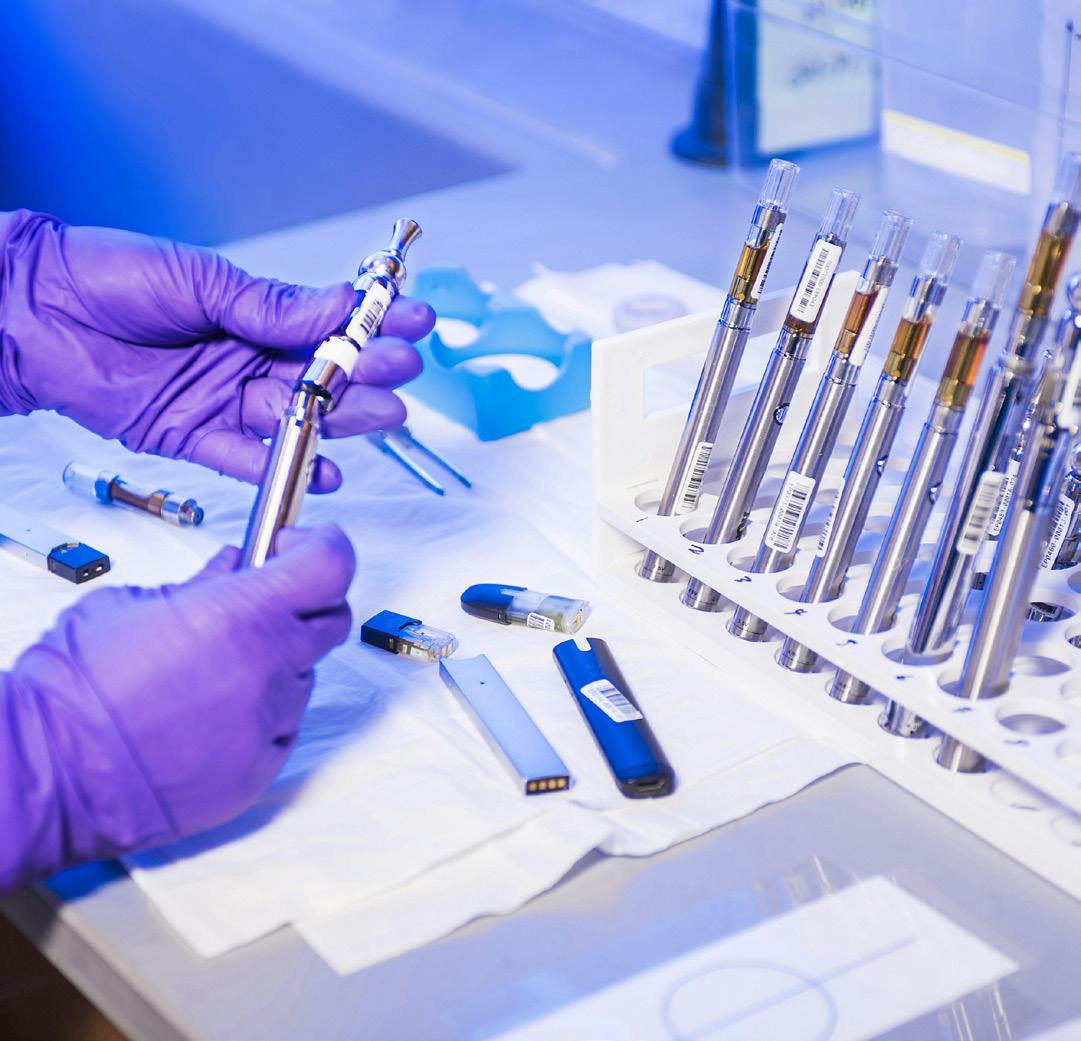Why is it important to conduct biomedical research over a long period of time?
- Laura, Lower VI
Since 2003, vapes have become more socially acceptable in the UK. This attitude is similar to views on smoking at the end of the 19th century. Thanks to biomedical research, conducted over a sustained period of time, we came to understand the harmful effects of smoking. Without similar studies, how can we be sure that vaping is completely harmless? Here, I examine what we can learn from the history of scientific research into the effects of smoking, and what it means for us today when we consider vaping.
The short and long-term effects of smoking
Smoking is responsible for many severe illnesses. In a healthy lung, the cilia along the lining of the airways can move mucus, containing unwanted chemicals, out of the lungs. However, cigarette smoke can damage these cilia causing the mucus, along with harmful chemicals from the smoke, to accumulate.
Smoking has been shown to cause emphysema. This is due to the breaking down of alveoli walls, giving them a lower surface area, and an increase in air space, giving them a larger diffusion distance. As a result, there is a slower rate of oxygen diffusing into the bloodstream and the concentration of oxygen in the blood decreases. This results in a decrease in aerobic respiration which means that there is less energy release causing extreme fatigue. Finally, the carcinogens in cigarette smoke can cause mutations which lead to uncontrolled cell division and eventually lung cancer. Lung cancer takes a few years to develop, and it’s important to conduct scientific research over a long period of time to spot this.
Smoking became really popular at the end of the 19th century and was considered harmless. Cigarette consumption grew rapidly during the world wars as they were given to troops as a morale boosting exercise. Around this time lung cancer was seen as a very rare disease, until the 1920s when the numbers of people with lung cancer started increasing rapidly. It was not until the 1940s that the link between smoking and lung cancer was made.
In order to gather more data, population studies were conducted in which both cancer patients and those without lung cancer were asked whether or not they smoked. In 1949, Richard Doll found that in 649 cases of lung cancer, 647 people smoked. Public health messages like these had to compete with the huge marketing budgets of tobacco manufacturers, who published a journal, Chronica Nicotiana, to support tobacco. It was only after 1962, when restrictions were placed on advertising, that cigarette sales started to fall.
Understanding the long-term effects of vaping through biomedical research
Vaping is currently seen as risk free, like smoking was in the past. Professor John Britton, from the University of Nottingham, anticipates that in 40-50 years time we will start to see people developing lung cancer and other serious conditions as a result of vaping. Without conducting biomedical research over a long period of time we cannot know the long-term effects. In 2018, the vaping company Juul was bought by Atrial, a large tobacco company. This demonstrates that marketing will still be used against any biomedical research findings that are released in the future. Therefore, it will also be important that research findings are widely communicated. It will take time, possibly decades, for the effects of vaping to reveal themselves, and for public opinion to then catch up with the science.

